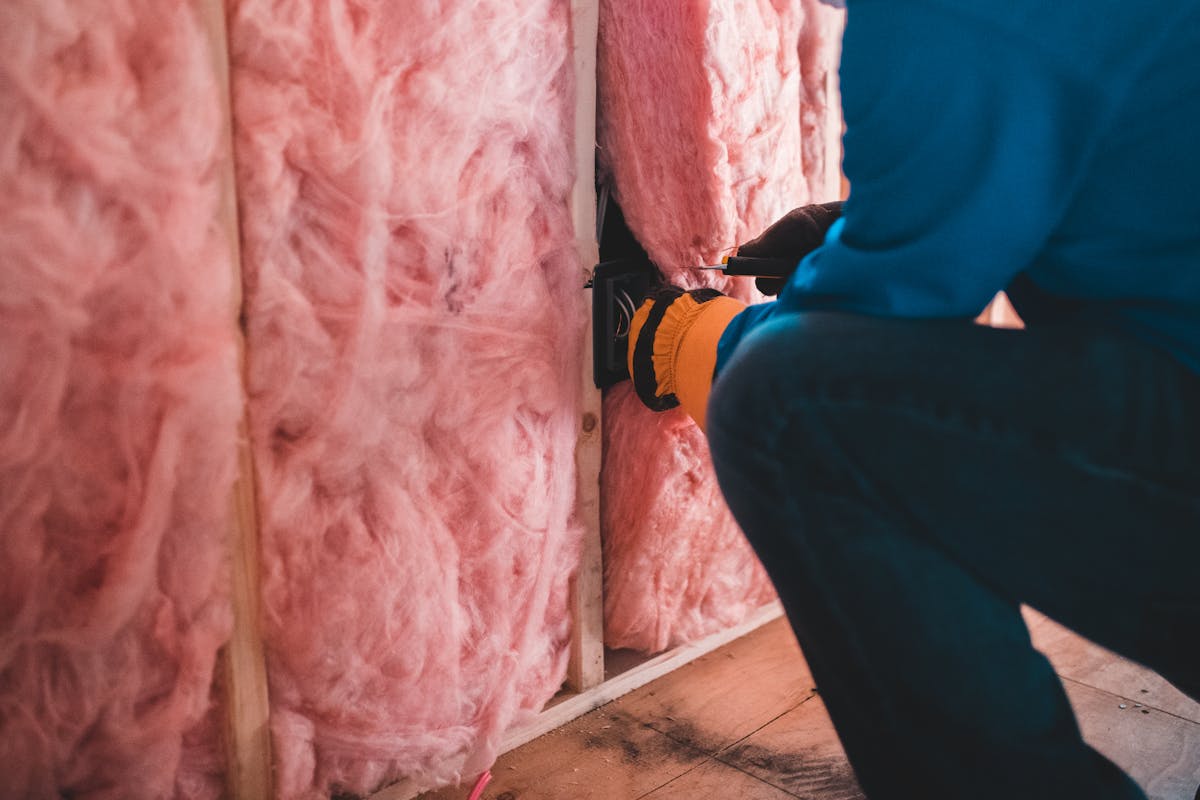
- Prepare the home for winter through essential home protection measures.
- Insulation and weather stripping retain heat and enhance energy efficiency in the home, ensuring efficient operation and safety.
- Chimney and fireplace safety prevents fire hazards and reduces carbon monoxide poisoning.
- Roof and gutter maintenance can prevent water damage and ice dams.
- Plumbing protection safeguards pipes from freezing and bursting.
As winter approaches, preparing your home to withstand colder temperatures, harsh weather conditions, and increased energy demands is essential. Winter-proofing your home involves implementing key protection measures to ensure safety, comfort, and energy efficiency throughout the season. From insulating your home and maintaining heating systems to safeguarding against chimney fires and preventing frozen pipes, there are various tasks homeowners can undertake to winterize their properties effectively. This article explores essential tips and strategies to help you winter-proof your home, ensuring it remains a secure and comfortable haven during the year’s coldest months.
Insulation and Weather Stripping
As winter descends, ensuring proper insulation and weather stripping in your home is paramount to maintaining warmth and energy efficiency. Adequate insulation retains heat and reduces energy costs by preventing heat loss. Various insulation materials, including fiberglass, cellulose, and foam, offer different levels of thermal resistance and are suitable for other home areas. Attics, walls, and floors are primary areas for insulation. At the same time, specific needs such as soundproofing or moisture resistance are also considered.
Weatherstripping
Equally important is weatherstripping, which seals gaps around windows and doors, preventing cold drafts from infiltrating your home. By eliminating these drafts, you can enhance comfort and reduce the workload on your heating system. Regular inspection of insulation and weather stripping is crucial. Check for signs of wear, such as crumbling insulation or gaps in weather stripping, and promptly address any issues. Reinforcing insulation in essential areas and replacing worn weather stripping can significantly improve your home’s ability to withstand winter’s chill.

Improve Insulation
Simple tips can help improve insulation and weatherstripping efficiency. Applying caulking or sealant to gaps and cracks, installing door sweeps, and using draft stoppers are effective methods to enhance insulation and reduce drafts. Additionally, consider upgrading to energy-efficient windows and doors, often with built-in weatherstripping features.
Heating System Maintenance
A well-functioning heating system is essential for maintaining comfort and safety in your home during winter. With proper maintenance, your heating system may be able to keep up with demand, leading to efficient operation, increased energy bills, and potentially costly breakdowns.
Schedule Professional Maintenance
To ensure your heating system is prepared for the winter season, it’s advisable to schedule professional maintenance before the cold weather sets in. A qualified technician can inspect your HVAC system and perform necessary repairs to optimize performance.
DIY Tasks
In addition to professional maintenance, homeowners can perform some DIY tasks to help their heating systems run efficiently. These may include cleaning or replacing air filters regularly to improve airflow and reduce strain on the system. Clogged filters can restrict airflow, leading to decreased efficiency and potentially causing damage to the system over time.
Checking and Replacing
Regularly checking and replacing air filters is a simple yet crucial aspect of heating system maintenance. Depending on the type of filter and usage, filters should typically be inspected monthly and replaced every one to three months. This ensures efficient operation and helps maintain indoor air quality by trapping dust, allergens, and other pollutants.
Warmth and Comfort
By prioritizing heating system maintenance, homeowners can enjoy consistent warmth and comfort throughout the winter season while potentially saving money on energy bills and avoiding costly repairs. Taking proactive steps to care for your heating system can help prolong its lifespan and ensure reliable performance when needed.

Chimney and Fireplace Safety
Chimney and fireplace maintenance is critical for preventing fire hazards and ensuring the safety of your home and family during the winter months. Neglecting these maintenance tasks can lead to chimney fires, carbon monoxide poisoning, and other potentially dangerous situations.
Chimney Inspection
Regular professional chimney inspection and cleaning are essential to remove creosote buildup, debris, and blockages that can restrict airflow and increase the risk of chimney fires. A certified chimney sweep can identify any issues and ensure that your chimney is clean and in good condition for safe operation.
Follow Safety Guidelines
When using your fireplace, it’s essential to follow safety guidelines to minimize the risk of accidents. Proper ventilation is crucial in preventing the buildup of harmful gases like carbon monoxide. Keep the damper open while the fire burns, allowing smoke and gases to escape safely. A fireplace screen can help contain embers and sparks, reducing the risk of accidental fires. Screens also provide additional protection, preventing children and pets from getting too close to the flames.
Carbon Monoxide Detectors
Installing carbon monoxide detectors near fireplaces and other fuel-burning appliances is crucial for early detection of carbon monoxide leaks. Carbon monoxide is an odorless, colorless gas that can be produced by incomplete combustion, posing a serious health risk if not detected promptly. By prioritizing chimney and fireplace safety measures, homeowners can enjoy the warmth and ambiance of their fireplace while minimizing the risk of fire and carbon monoxide hazards. Regular maintenance and safe usage practices are essential for keeping your home and family safe during winter.
Roof and Gutter Maintenance
Maintaining a sturdy roof and clear gutters is crucial for protecting your home from water damage and ice dams during winter. A well-maintained roof and gutter system helps channel water away from your home’s foundation, preventing leaks, structural damage, and potential mold growth. Regular roof inspections are essential for identifying any signs of damage, such as missing or damaged shingles, cracked flashing, or deteriorating seals around vents and chimneys. Prompt repairs are necessary to prevent water infiltration and preserve the roof’s integrity. It’s advisable to schedule professional inspections annually, especially before the onset of winter weather, to catch any issues early.
Clearing Gutters
Clearing gutters of debris is essential to facilitate proper drainage. Clogged gutters cause water backup, which can overflow and cause damage to the roof, siding, and foundation of your home. Regular gutter cleaning, especially when leaves are abundant in the fall, can help prevent costly water-related issues.
Prevent Debris Buildup
You should also consider installing durable metal roof snow guards to prevent debris buildup and reduce the frequency of gutter cleaning. Gutter guards are designed to allow water to flow freely into the gutters while blocking leaves and other debris from entering. Various types of gutter guards are available, including mesh screens, foam inserts, and gutter brushes, so homeowners can choose the option that best suits their needs and budget.
Protect from Water and Ice Damage
By prioritizing roof and gutter maintenance, homeowners can protect their homes from water damage and ice dams, ensuring a safe and dry interior throughout winter. Regular inspections, cleaning, and installing gutter guards are essential for preserving the integrity of your home’s exterior.
Plumbing Protection
Protecting your home’s plumbing system from freezing and bursting is crucial during winter to prevent costly damage and potential water emergencies. When temperatures drop below freezing, water inside pipes can expand and cause pipes to burst, leading to leaks, flooding, and extensive repairs.
Insulate Exposed Pipes
To safeguard against frozen pipes, insulating exposed pipes in unheated areas such as basements, attics, and crawl spaces is essential. Pipe insulation sleeves or wraps can help keep pipes warm and prevent heat loss. Additionally, allowing faucets to drip slightly during freezing weather can help relieve pressure in the pipes and reduce the risk of freezing. Outdoor faucets and irrigation systems are particularly vulnerable to freezing temperatures. Before winter sets in, it’s essential to drain and winterize these systems to prevent damage. Disconnect and drain garden hoses and shut off outdoor water valves to prevent water from freezing inside pipes.
Main Water Supply
Knowing how to shut off the main water supply to your home is essential in case of emergencies such as burst pipes or significant leaks. Locate the main shut-off valve and ensure all household members know how to operate it. In a plumbing emergency, quickly shutting off the water supply can help minimize damage and prevent further water loss.
In conclusion, winter-proofing your home ensures safety, comfort, and energy efficiency throughout the colder months. By implementing the essential protection measures discussed, including insulation and weather stripping, heating system maintenance, chimney and fireplace safety, roof and gutter maintenance, and plumbing protection, homeowners can mitigate potential risks and enjoy a warm and secure environment. Prioritizing these tasks not only safeguards against hazards like fire, burst pipes, and water damage but also helps reduce energy costs and prolong the lifespan of your home’s systems. By taking proactive steps to winterize your home, you can rest assured that your family will stay safe and comfortable all season.